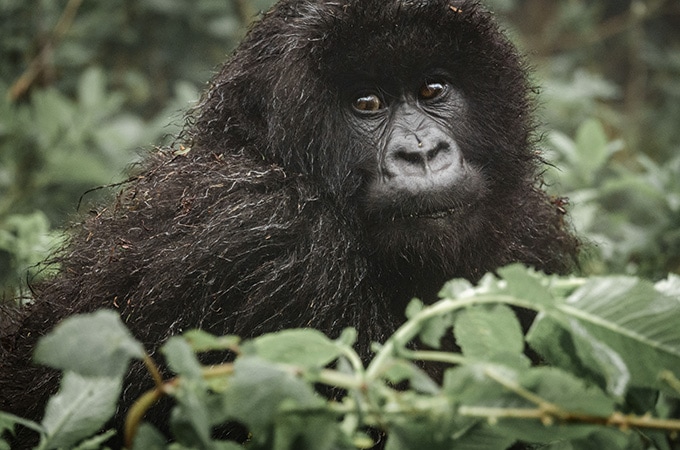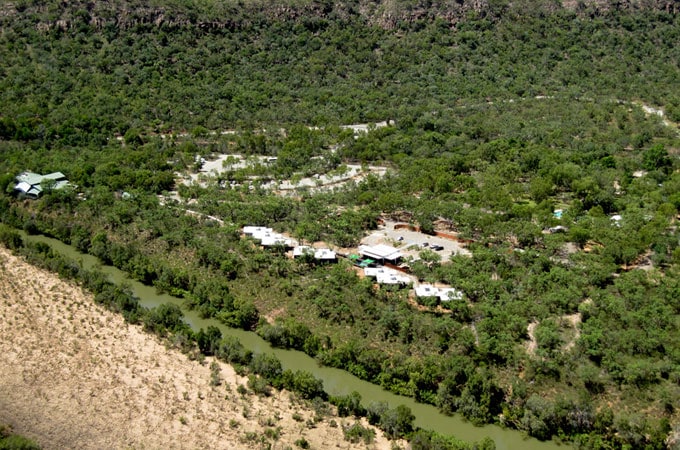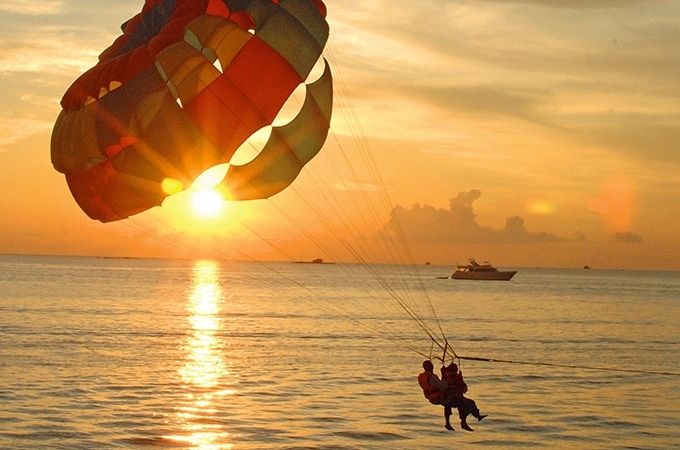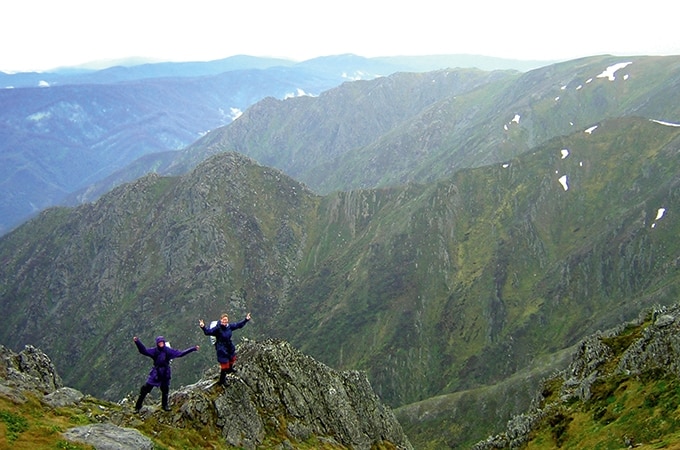Embarking on a gorilla trek in Uganda’s Bwindi Impenetrable Forest is a once-in-a-lifetime experience. The forest is aptly named, with a thick and tangled undergrowth that requires a machete to navigate. As I set out on my six-hour trek, I was surrounded by a vibrant array of greens, vines, and vegetation, all in search of the elusive mountain gorillas that call this region home.
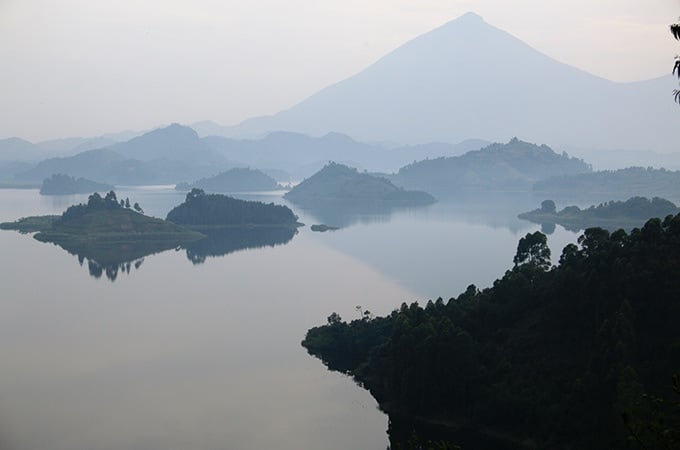
I reached Bwindi National Park at dusk after travelling for hours along the dusty, rough roads of Uganda. The drive was scenic, winding through villages of mud huts (their front doors adding an occasional splash of colour) and rolling hills of tea plantations. As we neared the national park, the villages became more sparsely scattered among the hills and the roads turned more treacherous.
Located in southwestern Uganda in the Kanungu District, Bwindi Impenetrable Forest is one of the world’s largest primeval forests. (According to my driver, Moses, Bwindi means ‘impenetrable’ and is derived from the Runyakitara language.) Bordering the Democratic Republic of the Congo (DRC) and the Virunga volcanoes, it’s one of the most biologically diverse areas on Earth and has been recognised by UNESCO as a World Heritage site for its biological significance.
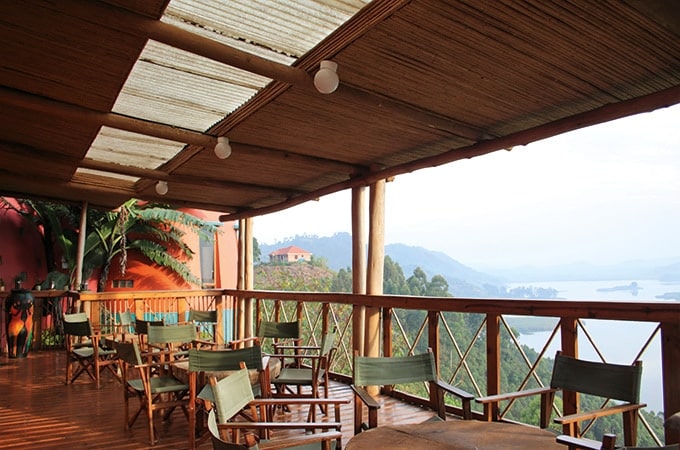
We arrived at Chameleon Hill Lodge at dusk, and even in the dying light I was in awe of the view. The lodge sits on a hill overlooking Lake Mutanda, with the Virunga volcanoes as a magnificent backdrop. Mist clung to the lake and surrounding mountains, and as I gazed at them and thought about the journey that lay ahead, Gorillas in the Mist (watched again in anticipation of this trip) sprang to mind, and suddenly its title made complete sense.
In the daylight, Chameleon Hill Lodge revealed its true colours – literally. Flamboyant, vibrant and colourful, it’s quite the unique place to rest one’s weary head. Individual chalets line a path down the hill, each one flaunting its own identity and colour scheme, with high-quality handmade furnishings in a Euro-African style. Bearing a packed lunch prepared by the friendly staff, I set off for the hour-long drive that would take us deeper into the national park. At the departure point I was met by a team of trackers and porters before being briefed on the trek. A permit for gorilla trekking will set you back A$795, and a porter A$20 – it was money well spent.
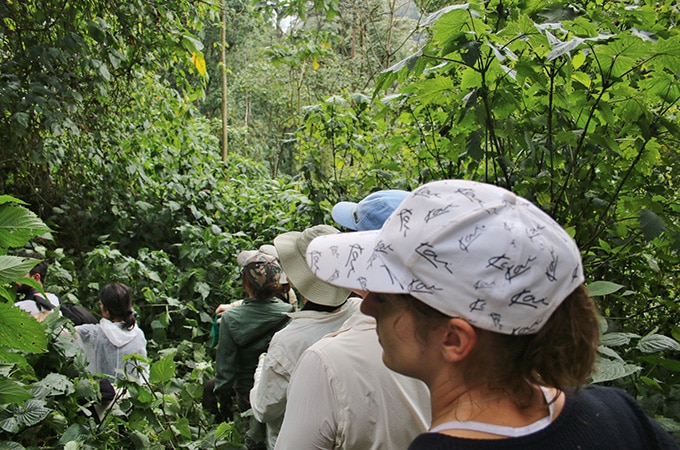
Many of the porters are converted poachers, so employing their services doesn’t just help trekkers, but also the conservation of the national park and its inhabitants. Bwindi was only declared a national park in 1991, when it was at great risk from local poachers. The threat remains, but these days the Uganda Wildlife Association works with locals and law enforcement to ensure the conservation of the area. Educating the poachers to recognise the tourism value in the park and its gorillas is a project that has been working successfully.
Decked out in hiking boots, long lightweight pants, a full-sleeved breathable shirt, hat and gloves, I was well-prepared for the six hours of trekking that lay ahead – or so I thought. We started off along a well-worn path, the hiking level moderate. The temperature was cool, the pace comfortable and I was able to take in my surroundings, trying to recognise some plants along the way. The trackers were all well-informed about the gorillas’ locations and I felt the mission would be an easy one. I could not have been more wrong…
Within moments, we had left the safety of the worn track and began forging our own path through the dense undergrowth. A tracker led the way, hacking at the vines and trying to clear a path. Other than that, it was a matter of pushing and pulling the foliage out of the way, battling with the vines that entrapped our feet in an attempt to keep us from moving forward. The terrain slowly inclined, and before I knew it, we were no longer scrambling horizontally through the forest, but vertically up the mountain.
Related article: A Three Country African Honeymoon
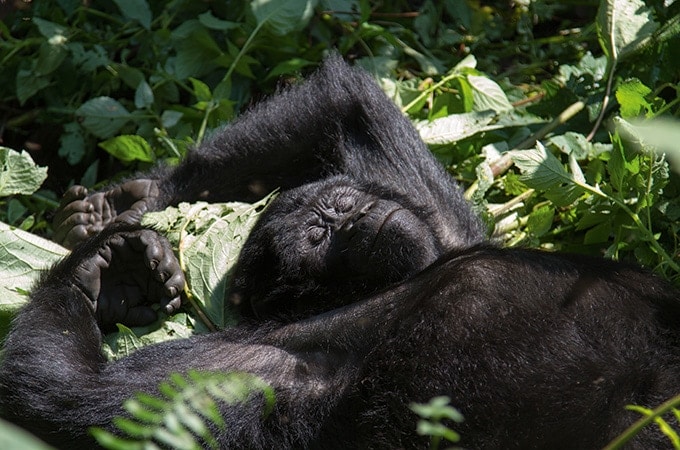
As we picked up the pace, the cool temperatures of the forest were left behind and a stifling heat and suffocating humidity crept in. It had now been close to four hours of trekking and my feet started to feel as if they were no longer a part of me. As fatigue started to kick in I was more than delighted to have a moment’s rest – and even more so when the trackers signalled that the gorillas were close. My heart pounding in my chest, one tracker used his machete to part the foliage in front of me, revealing a large silverback mountain gorilla. He was right there, just metres from where I sat. I was overcome with emotion. It was like I had meshed with the environment and it was just as normal for me to be there as it was for the gorilla. It took me a few moments to fully comprehend where I was and what I was experiencing. When I did, I was mesmerised by the silverback’s continuous munching of the surrounding foliage. He was massive – way bigger than I anticipated – his head so very large. And although he was facing away from me, I felt he sensed I was there.
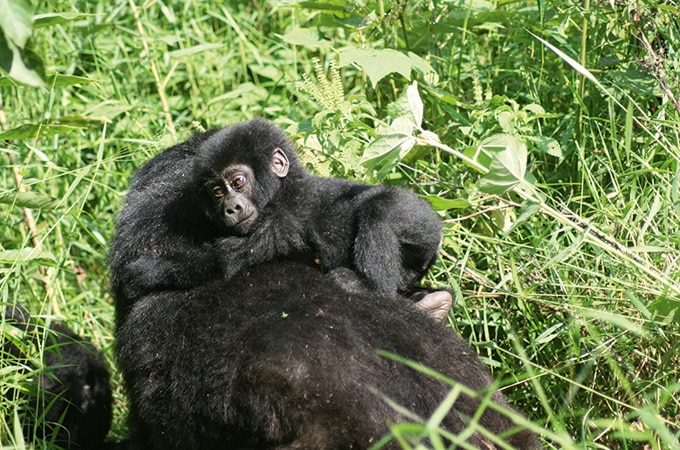
The silence was broken by the snapping of branches and rustling of trees. It didn’t faze the grazing silverback, who blissfully continued his all-you-can-eat buffet. I, however, was curious – and, for a brief moment, alarmed – to see what was causing such a commotion. Exploding through the forest came a young gorilla, boisterous and cheeky like a child. He swung through the trees, showing off like he was the star of his own private show. During the hour we spent with the gorillas two more silverbacks came and left, and female gorillas joined the group as if checking up on the young. One female groomed a male companion, searching his hair for ticks in a bonding cleaning ritual.
The hours spent trekking through the unforgiving jungle to see these magnificent animals seemed to last forever, while the time we actually spent with them went by in the blink of an eye. Whether it was the emotion or simply exhaustion, I don’t know, but as I descended the mountain on the much- quicker return journey (we’d circled back a bit while following the gorillas) I seemed to spend more time on my bottom than on my feet. I moved on auto pilot, the whole time thinking about the baby gorilla – so young, innocent and carefree, and totally unaware of the hard work required to protect his home. I can only hope that this conservation continues to secure the safety of the world’s last mountain gorillas, so generations to come can enjoy the life-changing experience I had the privilege to share.
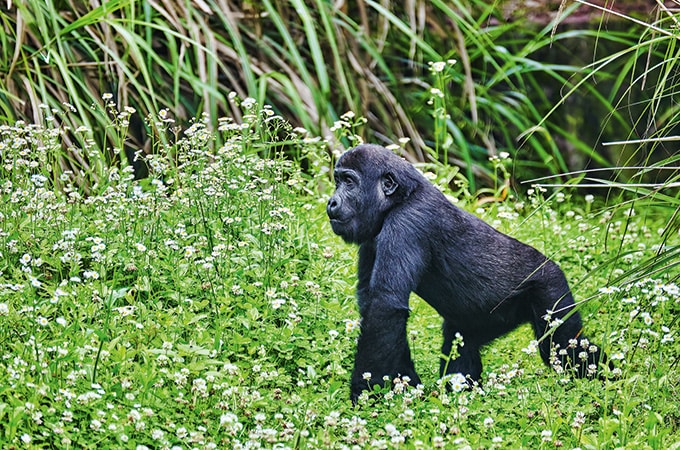
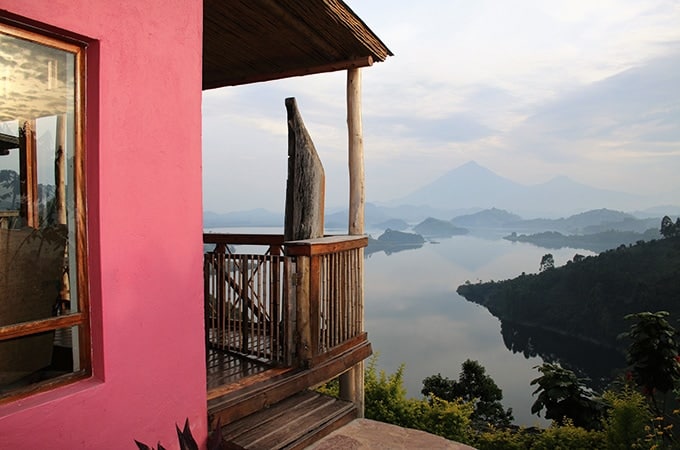

Need to Know
- Fly from Australia to Entebbe in Uganda via Johannesburg with South African Airways
- A single-entry tourist visa costs A$66
- Three-day gorilla trekking adventures with Lets Go Travel
- A gorilla trekking permit costs from A$795. There are limited numbers for trekking each day, so permits must be pre-booked
- Anti-malaria and yellow fever medication are a must when travelling to Uganda. A yellow fever certificate is sited on entry into the country and on return to Australia
- Local currency is the Uganda shilling. If you take AUD make sure the notes are undamaged and newer than 2009
Related article: Eco-tourism in Kenya: 6 Amazing Experiences
